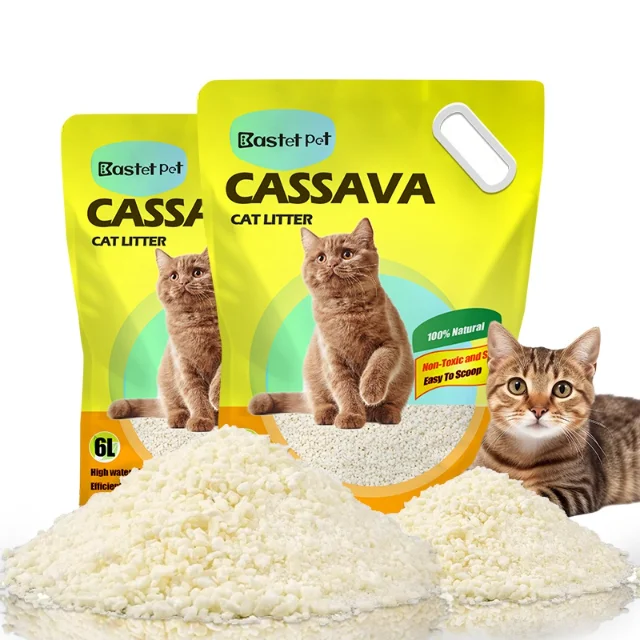
Yeah, it honestly feels a bit insulting sometimes. The place is tidy, the floors don’t smell like pets, you’re scooping the litter box like clockwork, you’ve got a nice candle burning — the kind you didn’t even buy on sale — and somehow the litter box still gives off that swampy, standing-water kind of stink.
Before deciding your cat is the problem, it’s worth taking a closer look at what’s happening inside the box itself. Start with the litter you’re using. Different litter materials hold urine and trap odor in totally different ways, and some products are basically just there to absorb moisture, not to control smell. Then there’s the routine around it: how often the box actually gets washed out instead of just topped up, where you’ve put it in the room, and whether that warm, slightly humid corner has basically turned into a little bacteria incubator.
What Makes Your Cat’s Litter Box Smell So Bad?
Sometimes the smell is not just “normal cat smell.” Sometimes it is sharp and stings the nose. That is the moment most cat owners ask why does my cat’s litter box smell like ammonia. The answer is usually chemistry and bacteria, not bad behavior. Strong odor comes from urine breaking down, trapped moisture, and the wrong litter holding on to waste instead of locking it up.
Trapped Ammonia And Moisture Build Up
Cat urine is high in urea. When urea breaks down, it turns into ammonia. Ammonia is that sharp smell that hits you when you walk past the box and immediately regret walking past the box. If the litter does not hold liquid fast, the urine sits, bacteria break it down, and the air right above the litter becomes a cloud of ammonia. Closed boxes with poor airflow make this worse. Low absorbency litters also make this worse, because moisture is still there hours later.
High Protein Diet And Bacteria Growth
Cats are natural carnivores. High protein diets are good for them, and most good foods are protein-heavy. The side effect is a stronger smell when the stool hits the box. Add warmth and humidity and you get rapid bacterial activity in the litter. That bacteria activity is part of why the smell lingers even after you scoop. This is also why hotter summer rooms usually smell worse than winter rooms with the same cleaning routine.
Wrong Litter Type Or Weak Cleaning Habit
A lot of clay litter clumps, but not all clay does great work on odor. If urine sinks to the bottom and spreads out before clumping, the base of the box slowly becomes one big smell pad. Cleaning too late means that layer keeps reacting. A low scoop schedule does the same thing. Leaving the box in a closed closet with no airflow also turns it into a mini gas chamber. So box location, litter type, and scoop rhythm all work together.
How To Fix Cat Litter Box Odor Naturally?
Once you know why the smell hits so hard, the next step is how to make cat litter smell better naturally. For most homes, it is not about blasting fragrance. It is about removing the cause. Natural odor control means trapping liquid fast, keeping bacteria from partying in the box, and keeping air moving.
The easiest wins come from litter choice, airflow, moisture control, and a cleaning plan you can actually keep up with every day, not just once in a while.
Choose A Truly Plant Based Litter
Plant based clumping products such as cassava litter and other grain or root starch blends pull in moisture fast and lock it. A fast clump matters. When urine is trapped into a firm clump before it spreads, ammonia release drops and scooping gets simpler. Some versions are made from edible-grade plant starch with no harsh chemical perfume. That makes them gentle on paws, low dust, and safer for kittens that lick their feet. A good example is an eco-friendly premium cassava cat litter designed to absorb fast, clump tight, and fight odor using plant material, not synthetic scents.
Keep The Box Dry And Let It Breathe
Moisture is the main driver of stink. A damp, closed box traps smell under a lid until you open it and get hit in the face. You can reduce that by placing the litter box in a spot with at least some air movement. Try to avoid tucking it in a sealed bathroom corner with no fan. Keeping the base of the tray dry helps slow down bacteria, which slows down that swamp smell.
Use Gentle Natural Absorbers
If odor still lingers, you can add a thin sprinkle of baking soda under the clean litter layer, or a pouch of safe activated carbon near the box. These absorb smell without trying to drown it in fake floral scent. A lot of cats hate strong perfume in litter and may avoid the box if it smells like detergent. So light, neutral odor capture usually works better than heavy fragrance.
Clean Smart, Not Just Often
Scooping once or twice a day sounds simple, but it is still the most effective thing you can do. One full litter change every week or two keeps the base from turning into sludge. Cleaning the empty box with warm water and a mild unscented soap helps remove film. Strong bleach or chemical cleaner can leave residue that some cats refuse to step on, so gentle is better. You want clean, not chemical burn.
Why Eco Friendly Cat Litter Makes a Big Difference
There is a second benefit to plant based litter that gets less attention. It is not just about smell today. It is also about what goes into the trash can tomorrow. Traditional clay litter is mined, heavy, dusty, and not biodegradable. Many plant based formulas are made from renewable starch sources and are easier on the environment. That matters if you scoop two or three times a day, every day, for years.
Here is a simple comparison for daily use.
| Feature | Clay Litter | Cassava Based Litter |
| Odor Control | Moderate, fades | Strong, traps ammonia |
| Clumping Speed | Slower in corners | Fast, tight clumps |
| Dust Level | Often noticeable | Very low |
| Comfort For Paws | Coarse texture | Softer, fine texture |
| Biodegradable | No | Yes, plant based |
For anyone trying to keep a small apartment from smelling like a swamp, this difference is not theory. It is the difference between scooping a clean, solid clump and scraping sludge off the bottom.

Quick Tips To Keep Litter Box Fresh Longer
Small habits keep odor from coming back. Scoop twice a day if possible. Keep litter depth around six to eight centimeters so urine does not hit bare plastic and pool. Use one box per cat plus one extra in multi-cat homes to spread the load. Avoid heavy perfume sprays near the box because those sprays usually mask odor for five minutes, then blend with ammonia and somehow smell even worse. Replace all litter every ten to fourteen days depending on how many cats share the same box.
Company Profile
BASTET (Tianjin) Pet Products Co., Ltd., also known in the market as Bastet Pet, focuses on plant based litter solutions and practical odor control for cat homes. The company works on materials such as cassava starch to produce tight clumping, low dust litter that is designed to trap liquid quickly, limit ammonia, and make scooping simpler. This helps solve everyday problems cat owners talk about most, like smell, cleanup time, and mess outside the box. The team behind this work tests for fast absorption, paw comfort, and easy disposal, not just nice packaging. The idea is to offer a cleaner box for the cat, a cleaner room for the household, and less waste headed to the bin.
FAQ
Q1: Why does my cat’s litter box smell like ammonia?
A: Ammonia smell comes from cat urine breaking down in the box. If the litter does not trap moisture fast, bacteria convert urea into ammonia and the odor builds in the air above the box.
Q2: How to make cat litter smell better naturally?
A: Scoop daily, use fast clumping plant based litter, keep airflow around the box, and use mild natural absorbers like baking soda instead of heavy perfume.
Q3: How often should the litter be changed completely?
A: Most single cat boxes do well with a full change every 10 to 14 days. Multi cat boxes may need a full reset sooner because waste builds faster in the base layer.
Q4: Is cassava litter safe for kittens?
A: Cassava based litter is made from plant starch, forms soft clumps, and has low dust. That makes it gentle on small paws and less irritating for sensitive kittens.
Q5: Does box placement matter for odor?
A: Yes. A box in a sealed corner traps smell. A box in a spot with light airflow dries faster, slows bacteria growth, and keeps the whole room from smelling like a swamp.




